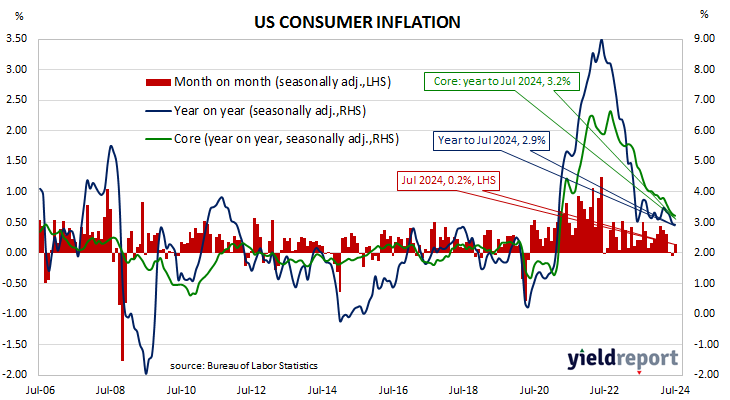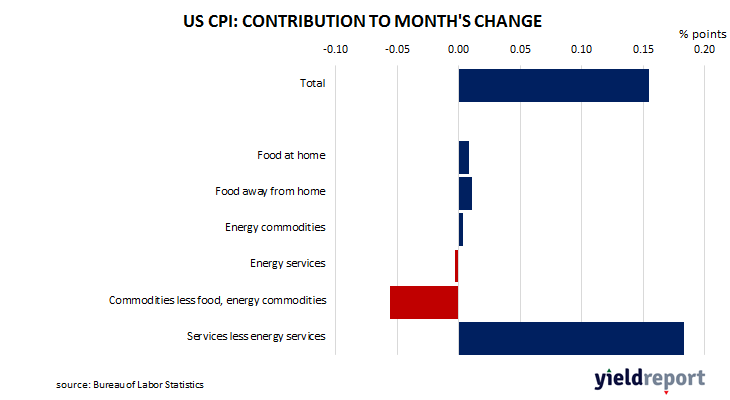Summary: US CPI up 0.2% in July, in line with expectations; annual inflation rate slows from 3.0% to 2.9%; “core” rate up 0.2%, up 3.2% over year; Westpac risks around inflation, growth increasingly leaning towards downside; short-term Treasury yields rise, longer-term yields fall; rate-cut expectations soften, eight cuts still expected; non-energy services main driver of overall result; Citigroup: catch-up of slowing shelter prices has begun.
The annual rate of US inflation as measured by changes in the consumer price index (CPI) halved from nearly 3% in the period from July 2018 to February 2019. It then fluctuated in a range from 1.5% to 2.0% through 2019 before rising above 2.0% in the final months of that year. Substantially lower rates were reported from March 2020 to May 2020 and they remained below 2% until March 2021. They then rose significantly before declining from mid-2022.
The latest US CPI figures released by the Bureau of Labor Statistics indicated seasonally-adjusted consumer prices increased by 0.2% on average in July. The rise was in line with expectations and in contrast with June’s 0.1% decline after it was revised down from zero. On a 12-month basis, the inflation rate slowed from 3.0% to 2.9%.
“Headline” inflation is known to be volatile and so references are often made to “core” inflation for analytical purposes. The core prices index, the index which excludes the more variable food and energy components, also increased by 0.2% on a seasonally-adjusted basis over the month, in line with expectations. The annual growth rate slowed from June’s rate of 3.3% to 3.2%.
“The inflation report is further evidence that the risks around inflation and growth are increasingly leaning towards downside growth outcomes and support the assessment that restrictive policy conditions should be gradually unwound,” said Westpac economist Jameson Coombs.
Short-term US Treasury bond yields increased on the day while longer-term yields fell. By the close of business, the 2-year Treasury yield had gained 3bps to 3.96%, the 10-year yield had slipped 1bp to 3.83% while the 30-year yield finished 4bps lower at 4.12%.
In terms of US Fed policy, expectations of a lower federal funds rate in the next 12 months softened, although around eight 25bp cuts are still currently factored in. At the close of business, contracts implied the effective federal funds rate would average 5.185% in September, 4.725% in November and 4.495% in December. July 2025 contracts implied 3.41%, 192bps less than the current rate.
The largest influence on headline results is often the change in fuel prices. Prices of “Energy commodities”, the segment which contains vehicle fuels, increased by 0.1% and contributed zero percentage points to the total after rounding. However, prices of non-energy services, the segment which includes actual and implied rents, had the largest single effect on the total as they contributed 0.18 percentage points following a 0.3% increase on average.
“Some surprising strength in shelter inflation was offset with softer core goods prices,” said Citigroup senior economist Veronica Clark. “We would not read too much into month-to-month volatility in shelter, led by stronger rents in the West in July, a region that had been particularly weak in recent months. We still think the long-awaited catch-up of slowing shelter to softer market rents has begun and will continue over the coming months.”



